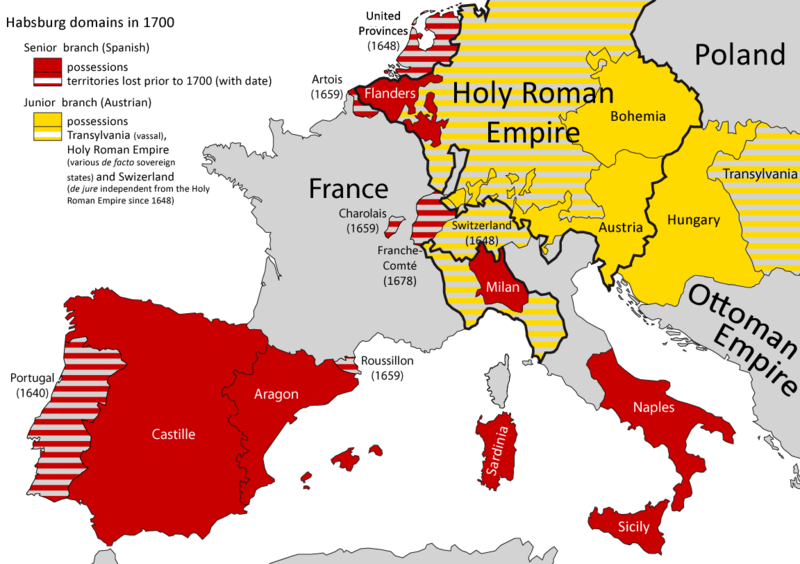Germany had one
family, the Habsburgs, which held the empire from Frederick III in 1440, all
the way through the dissolution of the empire in 1806. The empire had started
with Austria, and slowly gained Bohemia, Hungary, and Burgundy, at which point
the empire was named the Holy Roman Empire. The major feat about the Holy Roman
Empire is that all of the land was gained without the use of war; only marriage
was used to expand the Holy Roman Empire. Schulze used a great quote about this
feat, which read, "Others must fight wars; you, O fortunate Austria,
simply wed" (Schulze 32).
I find this very intriguing,
as it is very rare for an empire to grow via any other means than war, and the
Habsburgs use marriage. If the empire had grown that much via only marriage and
inheritance, then the family must have been very large, and the wives must have
borne many sons for the royal family. I also find it strange that many people
notice how they are different than all other empires.
With the
Habsburgs using marriage and inheritance to gain land, it most likely had a
hand in the peaceful empire that was the Holy Roman Empire. As one that tries
to avoid war, this use to grow the empire makes me wonder why more people have
not tried to grow their empires in the peaceful way instead of jumping straight
to war and fighting.
With the use of
war, it destroys buildings and cities and things that may be useful in the
future, but then the country that ends up on the winning side of the battle has
to spend the extra money on rebuilding and repairing so the hurt or destroyed
villages do not revolt against the new form of government.
The use of
peaceful growth in the empire helped the country grow in pride and unity, and
the people I know with a German heritage are proud to let people know that they
are German. The peaceful growth also helped the empire grow in an inexpensive
way, which then allowed the country spread the culture, language, architecture,
religion, and more.
Germany seemed to
have the correct path of growth in their empire, as the empire lasted from the
early 900s through 1806, and left a huge impact on Europe.
This church, Karlkirche, was funded by Charles II as a remembrance for his namesake, who was a revered as a healer for plague sufferers. The church was built at the beginning of the 1700s, towards the end of the Holy Roman Empire and a few years after the plague raged through Europe.
The above map displays the land the Habsburg family had ruled at its greatest. The yellow are the possessions and countries within the influences of the Habsburgs. The red are the possessions and influences of Spain. This picture does a great job showing how much land the Holy Roman Empire covered, and how great of a feat it is to gain all of that via marriage or inheritance.
(Word Count, minus captions: 389)


No comments:
Post a Comment